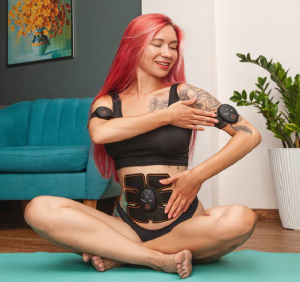Physical therapy is integral to recovery and rehabilitation, “for many injuries and medical conditions. While traditional physical therapy often requires travelling to an office or clinic multiple times a week, home and mobile therapy services are becoming increasingly popular and convenient options.
Table of Contents
ToggleReducing Barriers to Accessing Care
Getting to a physical therapy office can be challenging, if not impossible, for many people. Factors like limited mobility, lack of transportation, busy work schedules, and family responsibilities can make managing in-clinic treatment difficult.
Home and mobile physical therapy eliminates many of these barriers. Therapists can come directly to a patient’s home, workplace, or other location. This reduces travel requirements and makes it simpler to fit therapy sessions into one’s patient routine. It also allows people with disabilities, injuries, or other conditions that limit mobility to access high-quality rehab care.
Custone’sd Treatment in Comfortable Surroundings
In-home and mobile care offer therapists insight into a patient’s functional abilities that can’t be observed in the clinic. By analyzing how someone moves through their home environment, therapists can develop patients’ treatment plans to target any problem areas. Recommendations can be made to modify the home setup for more excellent safety and access. Patients also tend to feel more comfortable and confident progressing through therapeutic activities at home rather than in an unfamiliar clinical setting.
Treatment plans can even be adjusted daily based on how a patient feels and their evolving needs. This level of personalization improves outcomes and patient satisfaction.
Improved Continuity of Care
Between evaluation appointments, hands-on therapy sessions, and follow-ups, patients may see multiple clinicians throughout treatment at traditional rehab clinics and practices. In contrast, home and mobile physical therapy generally involves working consistently with the same one or two therapists from start to finish.
This continuity builds rapport between patient and provider. The therapist gains greater familiarity with the patient’s case to make more informed treatment decisions. Patients also benefit from consistent encouragement and accountability from someone who knows the patient’s goals. Studies show improved adherence and outcomes when patients develop an ongoing relationship with their therapist.
Convenience for Caregivers
For caregivers of individuals dealing with chronic disabilities or conditions requiring ongoing rehab, home and mobile physical therapy offers welcome convenience. It eliminates the need to transport the person to and from appointments every week, which may require special equipment and vehicles that are not always easily accessible. Accessing therapy multiple times per week at home also gives caregivers more flexibility to attend to other daily responsibilities without the added stress of transporting their loved one outside the home for frequent appointments. Accessing consistent home-based treatment helps improve compliance and outcomes while easing some of the caregiving burden.
Expanding Access to Specialized Care
Home and mobile physical therapy makes specialized therapeutic modalities more accessible. Ultrasound, electric stimulation, cold laser, massage, and other treatments can be challenging for providers to bring to home and workplace visit ports. Advancements in technology are making many modalities more portable to improve in-home service capabilities.
Home and mobile therapy also increase access to highly-trained specialists for complex conditions like spinal cord injuries, neurological diseases, and pediatric cases. Specialist home health providers network qualified therapists so patients get excellent care even when living far from major hospitals and clinics.
Optimizing Convenience and Outcomes
Balancing treatment effectiveness with patient convenience and satisfaction is critical in today’s healthcare landscape. For physical therapy, home and mobile today allow providers to offer the benefits of personalization, continuity, accessibility, and advanced modalities in comfortable and familiar settings. Eliminating travel barriers, caregiver demands, and other challenges results in better patient compliance, outcomes, and experiences at every stage of recovery.
Conclusion:
Home and mobile physical therapy services are transforming the rehabilitation experience for many patients. By bringing personalized treatment directly into patients’ homes and communities, therapists can reduce barriers to care while gaining better insight into functional abilities. Patients benefit from working consistently with the same clinician who understands their cases and goals in depth. The heightened convenience, comfort, and continuity improve compliance, outcomes, and satisfaction. Advanced technologies make more rehab modalities mobile, home, and community-based physical therapy like Mobile physiotherapy by physio inq and offer the best quality and accessibility. This innovative care delivery model effectively brings therapy to the patient instead of the patient to treatment – improving life across the mobility spectrum.
More Stories
How Creatine Fuels Your Fitness Journey: A Deep Dive
Creatine. It's a word that gets tossed around in gyms and fitness circles, often associated with bulging biceps and superhuman...
Wholesale Fitness Equipment Unveiled: Strategies for Success, Market Trends, and Industry Innovations
Wholesale fitness gear is like stumbling upon a treasure trove of workout wonders – sending a bounty of exercise goodies...
Black High-Waisted Flare Leggings for Tall Women
Style and comfort with our black high waisted flare leggings tailored specifically for tall women. Combining fashion-forward design with unbeatable...
Revolutionizing Workouts: The Role of Software in Crossfit Gym Management
From being just a fitness fad, CrossFit has developed into a complete lifestyle that many fans have embraced. Its demanding...
Unlock Your Fitness Potential: A Beginner’s Guide
Embarking on a fitness journey can feel like stepping into a new world filled with challenges, opportunities, and discoveries. Starting...
Electrify Your Workout: Arms Trainers with EMS Technology Innovation
Electronic muscle stimulation (EMS) technology transforms how people train their bodies. EMS sends low-voltage electrical impulses to the muscles, causing...

